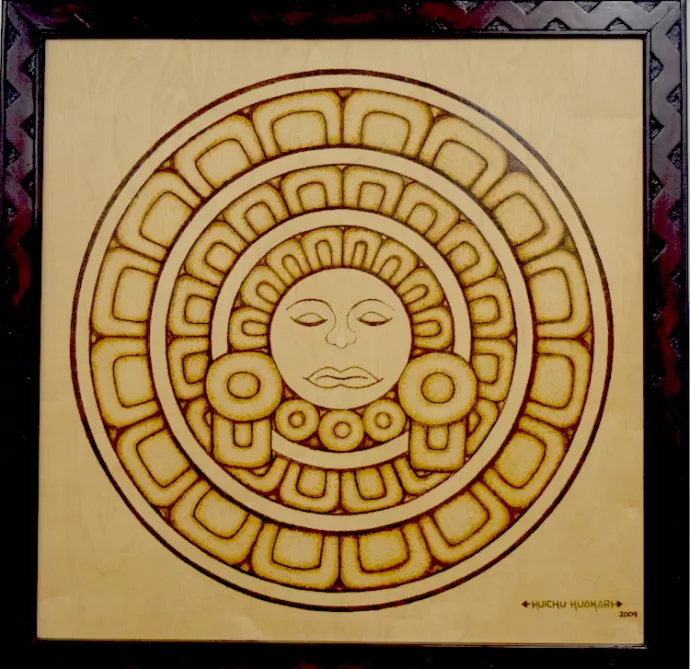Broadening access to the Kaxúmbekua (way of life): Saving P’urhépecha culture across English speaking countries
Featuring works by artist Huíchu Kuákari
Curated by Jerry Flores (Sociology) and Elizabeth Parke (CRIS)
Featured in Mississauga News!
This art exhibit is designed help preserve the cultural practices and traditions of the P’urhépecha peoples via an art exhibition at the Collaborative and Digital Research Space (CDRS). P’urhépecha are Indigenous peoples from the Michoacán region in central Mexico. They are one of the largest Indigenous communities across the Americas. Their traditions, customs and language are unique from any other cultural group in the region. Since the arrival of European colonizers over 500 years ago the community has fought to keep their Kaxúmbekua (way of life) and Purhe (language) alive and well. They have also actively resisted the Mexican state’s Meztisage racial project which encouraged Mexicans to identify as Mestizo or mixed race instead of Indigenous. Due to this, the Mexican national government has systematically underfunded local schools, municipal services, and health care in this region. Additionally, P’urhépecha ancestral lands sit on large reserves of timber, the biggest freshwater lake in Latin America, and lands that are ideal to cultivate high priced foods such as avocados. Given these resources, P’urhépecha have been inundated with illegal logging, feminicide, state sponsored violence and violence perpetuated by drug cartels in the country. These problems have become so acute that multiple communities have expelled local political officials and police alike. In turn they have formed their own traditional governments, schools and security forces despite a lack of monetary support. These multiple and interlocking challenges have resulted in large parts of P’urhépecha culture and language becoming lost as the community of four hundred thousand people fight for their survival.
Given these ongoing struggles, there has also been a large outbound migration of P’urhépecha from their ancestral lands. It is estimated that more than four-hundred thousand P’urhépecha and peoples of P’urhépecha descent live in multiple diasporas spreading across the United States, Canada, the United Kingdom, and other English speaking countries. Many of these community members (especially young people) speak English as their primary language and are eager to learn more about their culture and their ancestors’ communities. Despite this, there is a lack of written information on P’urhépecha art, music, food, and other cultural idiosyncrasies. This information is especially scarce for people who primarily speak English.
This yearlong art exhibit at the CDRS will display 20 original P’urhépecha pieces of art and will be accompanied with multimedia presentation. All information will be translated into English and distributed across media platforms free of charge. This event will provide access to traditional art, music and cultural to members of the UofT and UTM community. It will also provide academics the ability to more easily collaborate with the P’urhépecha community for research purposes. This project and the collaboration with Indigenous peoples across the world are in line with the goals of anti-racism and social justice outlined by UTM and Canada’s larger dedication to reconciliation. It also embraces the idea of decolonization and reclaiming Indigenous cultures across North America and the world.

